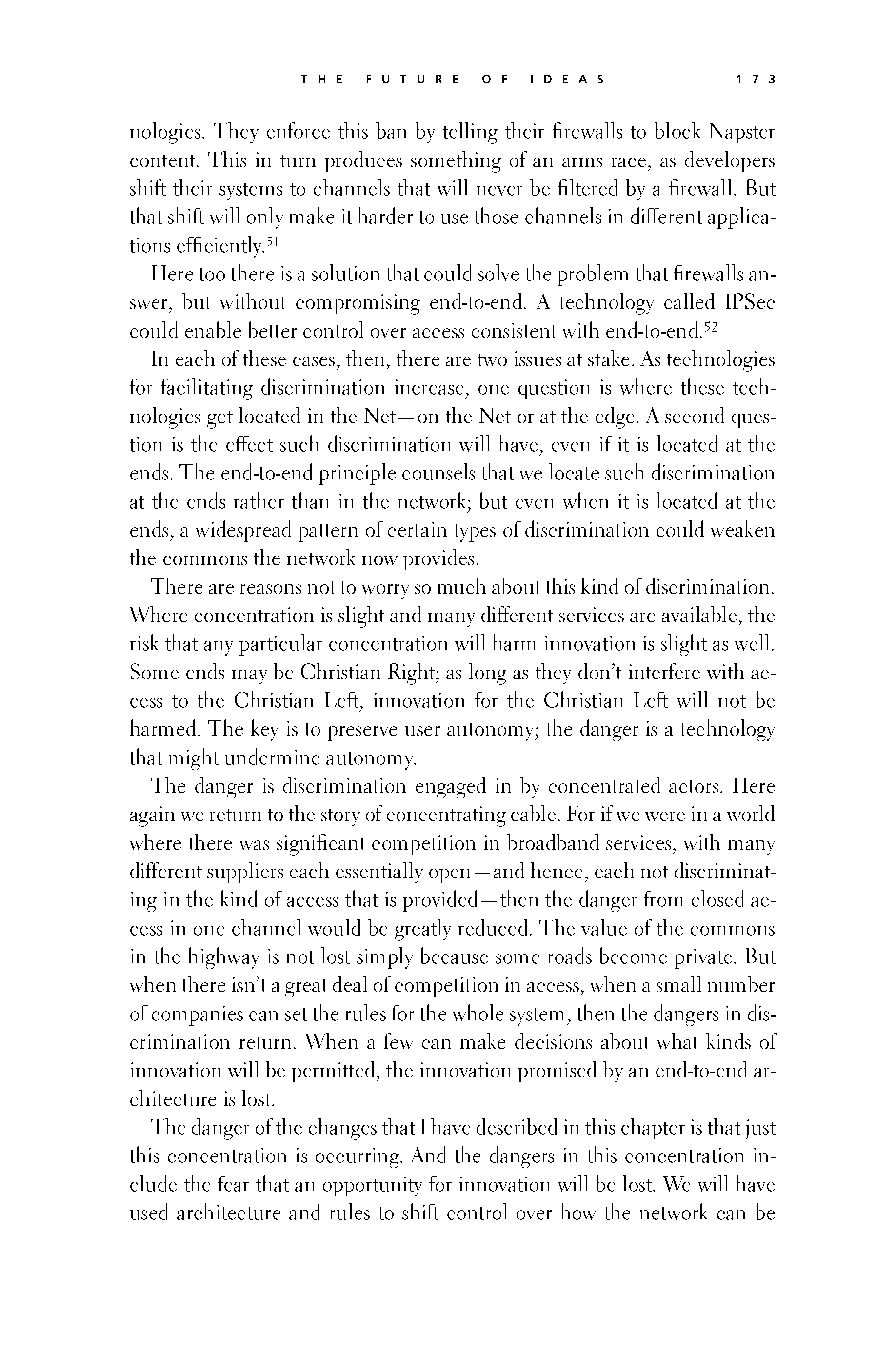 p172 _
-chap- _
toc-1 _
p173w _
toc-2 _
+chap+ _
p174
p172 _
-chap- _
toc-1 _
p173w _
toc-2 _
+chap+ _
p174
nologies. They enforce this ban by telling their firewalls to block Napster
content. This in turn produces something of an arms race, as developers
shift their systems to channels that will never be filtered by a firewall. But
that shift will only make it harder to use those channels in different applica-
tions efficiently.[10-51]
Here too there is a solution that could solve the problem that firewalls an-
swer, but without compromising end-to-end. A technology called IPSec
could enable better control over access consistent with end-to-end.[10-52]
In each of these cases, then, there are two issues at stake. As technologies
for facilitating discrimination increase, one question is where these tech-
nologies get located in the Net -- on the Net or at the edge. A second ques-
tion is the effect such discrimination will have, even if it is located at the
ends. The end-to-end principle counsels that we locate such discrimination
at the ends rather than in the network; but even when it is located at the
ends, a widespread pattern of certain types of discrimination could weaken
the commons the network now provides.
There are reasons not to worry so much about this kind of discrimination.
Where concentration is slight and many different services are available, the
risk that any particular concentration will harm innovation is slight as well.
Some ends may be Christian Right; as long as they don't interfere with ac-
cess to the Christian Left, innovation for the Christian Left will not be
harmed. The key is to preserve user autonomy; the danger is a technology
that might undermine autonomy.
The danger is discrimination engaged in by concentrated actors. Here
again we return to the story of concentrating cable. For if we were in a world
where there was significant competition in broadband services, with many
different suppliers each essentially open -- and hence, each not discriminat-
ing in the kind of access that is provided -- then the danger from closed ac-
cess in one channel would be greatly reduced. The value of the commons
in the highway is not lost simply because some roads become private. But
when there isn't a great deal of competition in access, when a small number
of companies can set the rules for the whole system, then the dangers in dis-
crimination return. When a few can make decisions about what kinds of
innovation will be permitted, the innovation promised by an end-to-end ar-
chitecture is lost.
The danger of the changes that I have described in this chapter is that just
this concentration is occurring. And the dangers in this concentration in-
clude the fear that an opportunity for innovation will be lost. We will have
used architecture and rules to shift control over how the network can be
[[173]]
p172 _
-chap- _
toc-1 _
p173w _
toc-2 _
+chap+ _
p174